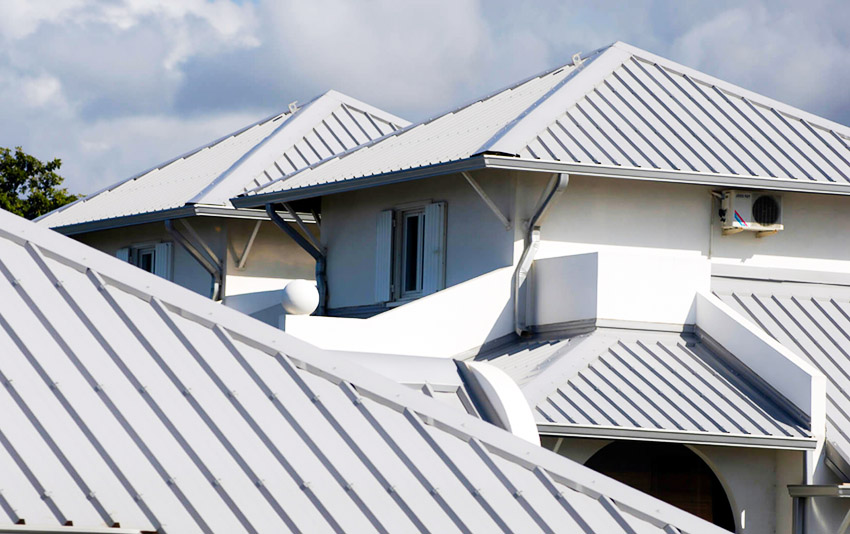You’re cozy at home, listening to the pitter-patter of rain on your roof. It’s almost therapeutic until a drip, drip, drip disrupts your calm.
You look up to find an unwelcome intruder – a roof leak. Suddenly, you’re faced with water damage and possible repairs that might cost an arm and a leg. But hey, don’t let this dampen your spirits! Remember that homeowner’s insurance policy you’ve been dutifully paying for? Now’s the time to put it to good use.
But here’s the catch – claiming insurance isn’t always as straightforward as we’d like it to be. There are steps to follow, documents to gather, professionals to consult and negotiations ahead of you. It can feel overwhelming especially when you’re already dealing with the stress of home damages.
That’s why we’ve got this step-by-step guide for you on how to make a roof leak insurance claim successfully. Stick around as we navigate through this process together, ensuring that raindrop doesn’t burn a hole in your pocket.
Understanding Your Homeowner’s Policy
Before you dive into making a roof leak insurance claim, it’s crucial that you truly grasp the ins and outs of your homeowner’s policy; this could be the lifeline that saves your home from potential ruin.
Understanding your coverage isn’t as daunting as it sounds, I promise! It’s all about breaking down those complicated terms and conditions into simpler language. You’ve got to know what’s covered, what’s not, and any limits or exclusions in there – let’s call them the small prints you tend to ignore.
It might not be an exhilarating read but trust me, getting acquainted with these details can save you a whole lot of stress later.
Now, let’s get more specific: Does your policy cover ‘all risks’ or is it only for ‘named perils’? If it’s the latter, ensure that water damage from roof leaks falls under those named perils. Also check if there are any dollar caps on payouts for such damages—you don’t want surprises when expecting a full coverage!

Identifying the Cause and Extent of Damage
In the midst of a downpour, you might find some unexpected guests in your home – drips and drops from above – signifying it’s time to identify the cause and extent of the damage. First thing’s first, don’t panic! Take this as an opportunity to play detective. Get up close and personal with that leaky spot. Your goal is to figure out if this is a one-time guest or a recurring nightmare.
Is it due to aging roof material or caused by a recent storm? It may be more than just rainwater seeping through; it could also be snow or ice damage depending on where you live.
Now that you’ve got your Sherlock Holmes hat on, let’s discuss how far Watson should go while documenting the evidence. You’ll need to keep track of when the leaks occur, where they’re coming from, and any visible damage they’ve caused like stained ceilings or peeling paint. If possible, take pictures or videos as proof for your insurance claim later on.
Remember though: safety always comes first! If there’s significant water damage making areas unsafe such as sagging ceilings or slippery floors – don’t risk it! Instead, get professional help immediately because your well-being is priceless compared to any claim payout.
Documenting the Damage
Now that you’ve got a handle on the situation, it’s time to put pen to paper and meticulously document every detail of the damage. Don’t rush through this, it’s crucial.
Go beyond just jotting down notes – take pictures or videos if possible, capturing all angles and aspects of the leak damage. This isn’t about simply noting down what happened; it’s about crafting a vivid picture that leaves no room for doubt or ambiguity in your insurer’s mind.
The more detailed you are in your documentation, the better your chances of success with your claim. Be thorough and make sure to include dates, times, descriptions of events leading up to noticing the leak, any attempts at repair, and consequences of the damage such as water stains or mold growth.
It may feel tedious but remember this is not merely paperwork – it’s a narrative where each photograph tells a compelling part of your story. Remember too that every minute detail can be an important piece in painting a clear picture for your insurance provider.
Your diligence here will pay off when it comes time to submit your claim!
Consultation with Professionals
Don’t hesitate to bring in the pros – consulting with professionals can not only help you understand the extent of your water damage, but also provide valuable advice on how to mitigate it and prevent future incidents.
These experts, be they roofers or contractors, know what causes leaks and how best to fix them. They can pinpoint exactly where the water is coming from and tell you if there are any structural issues that could lead to more problems down the line.
Their trained eyes might even spot things you’ve missed. Imagine having someone who’s seen hundreds, maybe even thousands, of leaky roofs at your side. This person knows precisely what to look for and has solutions up their sleeve that you wouldn’t dream of.
They might recommend something as simple as replacing a few shingles or suggest larger-scale repairs like replacing an entire section of roofing. Their professional advice not only helps resolve your current predicament but also equips you with knowledge on how to keep your beloved home safe from similar situations in the future – because let’s face it, no one wants round two with a leaky roof!
Preparing Your Application
So you’ve decided to hire a pro, and that’s fantastic! Preparing your application is the next crucial part of this journey. Now it’s time to pull together all the necessary documentation for your claim.
You will need pictures of the damage, repair estimates from professional roofers, and other evidence supporting your case. Remember, the more thorough you are now, the easier it will be down the road when negotiating with your insurance company. Don’t rush through this step – take your time to make sure everything is in order.
Your next task is compiling all these documents into an organized package for submission. Be sure to include a detailed account of what happened leading up to the leak; humanize your narrative so that whoever reads it can empathize with your situation. Explain how detrimental and disruptive this roof leak has been to your day-to-day life, making sure they understand how vital repairing this issue is for you and your family’s wellbeing.
The more personal touch you put into it – while still being factual – can often move mountains when handling matters like these!

Negotiating With the Insurance Company
Once you’ve compiled your application, it’s time to prepare for the inevitable: negotiating with the insurance company. This stage can be a bit of a rollercoaster ride, but don’t worry, I’m here to help you navigate through it.
Remember that insurance companies are in business to make money and they’ll strive to pay out as little as possible on claims. That’s where your detailed documentation comes in handy; it will serve as compelling evidence supporting your claim. Your goal is not only getting approval for the claim but also ensuring a fair settlement.
When negotiations start, stick to your guns and don’t let them lowball you on their first offer—it’s simply part of their strategy. It’s okay to push back and challenge their assessment if it seems unjust or doesn’t cover all necessary repairs. You might feel like David up against Goliath, but remember this: knowledge is power! You’ve done your homework and documented everything meticulously; use that information like an ace.
If things get too complicated or heated, consider hiring a public adjuster or an attorney who specializes in property damage claims—they’re worth their weight in gold when taking on big insurance companies.
Appeal Process if Claim is Denied
Now that you’ve got the hang of negotiating with your insurance company, it’s time to tackle a less appealing scenario. What if your insurance claim gets denied? Don’t fret or lose hope – it’s far from being the end of the road.
It might feel like a setback, but an appeal process is in place for such situations. If your roof leak claim is outrightly denied, don’t take no for an answer without understanding why. Examine the denial letter carefully and understand their reasons.
If you believe the decision was unjust, muster up your resolve and prepare to appeal. Remember, not all battles are won on the first try; some require resilience, persistence and a bit more strategic planning. Gather any additional evidence supporting your case and draft a well-structured argument that challenges their reasons for denying your claim.
You’re not alone in this; remember that help is available – be it professional legal advice or other homeowners who have walked this path before you.

